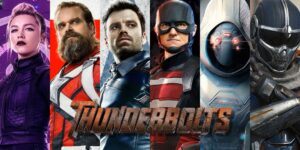
Marvel’s Thunderbolts is set to hit theaters on May 2, 2025, closing out Phase Five of the Marvel Cinematic Universe with a team that’s anything but traditional. But longtime comic fans know the Thunderbolts have always been complicated — rooted in deception, redemption, and shifting allegiances. As audiences get ready to meet the MCU’s version of this unlikely crew, it’s a perfect time to look back at the original Thunderbolts’ shocking debut in the comics, and how the new movie team compares.
The MCU’s Thunderbolts: Who’s on the Team (and Where You’ve Seen Them Before)
In Thunderbolts, Marvel pulls together familiar faces — characters with messy pasts and unfinished business. Here’s a closer look at the lineup, the actors bringing them to life, and where we’ve seen them in the MCU so far:
- Yelena Belova (Florence Pugh)
-
- First appeared in Black Widow (2021).
- Recruited by Valentina Allegra de Fontaine during Black Widow‘s post-credit scene, manipulated into blaming Clint Barton (Hawkeye) for the death of her sister, Natasha Romanoff.
- Later confronted Clint in Hawkeye (2021) in a bid for revenge.
- Bucky Barnes / The Winter Soldier (Sebastian Stan)
-
- Introduced in Captain America: The First Avenger (2011) and reemerged as the brainwashed assassin in Captain America: The Winter Soldier (2014). He made appearances in several films, including Avengers: Civil War, Avengers: Infinity War, and Avengers: Endgame. He also made important appearances in post-credit scenes in Antman and Black Panther.
- His path to redemption was central to The Falcon and the Winter Soldier (2021) series.
- Alexei Shostakov / Red Guardian (David Harbour)
-
- Debuted in Black Widow (2021) as Russia’s aging, boisterous super-soldier — filled with pride and regrets.
- John Walker / U.S. Agent (Wyatt Russell)
-
- Introduced in The Falcon and the Winter Soldier (2021) as the U.S. government’s chosen successor to Captain America.
- After a brutal fall from grace, he was recruited by Valentina and rebranded as U.S. Agent.
- Taskmaster / Antonia Dreykov (Olga Kurylenko)
-
- Appeared in Black Widow (2021).
- Revealed to be a mind-controlled assassin freed by Natasha at the film’s end, but still haunted by trauma.
- Ghost / Ava Starr (Hannah John-Kamen)
-
- Introduced in Ant-Man and the Wasp (2018).
- A quantum-phased saboteur who struggled for survival. Stabilized by Janet van Dyne, but disappeared from the MCU spotlight — until now.
- Sentry / Robert Reynolds (Lewis Pullman)
-
- Making his MCU debut in Thunderbolts.
- In Marvel Comics, Sentry possesses godlike powers but battles a dark alternate personality known as “The Void,” hinting at major internal conflict.
- Valentina Allegra de Fontaine (Julia Louis-Dreyfus)
-
- First appeared in The Falcon and the Winter Soldier (2021), with additional appearances in Black Widow (post-credit scene) and Black Panther: Wakanda Forever (2022).
- A manipulative government agent assembling a dangerous team for undisclosed — and likely dubious — missions.
As an Amazon Associate, I earn from qualifying purchases.
Purchase your official Marvel gear now!
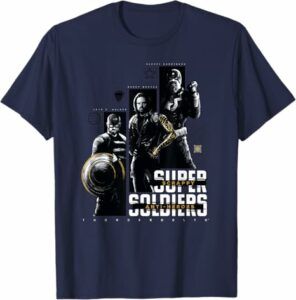
The Thunderbolts in Marvel Comics: A Legacy of Deception and Reinvention
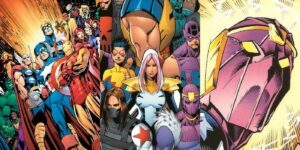
The Thunderbolts first appeared in The Incredible Hulk #449 (January 1997), created by Kurt Busiek (writer) and Mark Bagley (artist). Their shocking debut remains one of Marvel’s most famous twists.
Original Thunderbolts lineup and their comic first appearances:
- Citizen V (secretly Baron Zemo) — first appeared as Baron Zemo in The Avengers #6 (July 1964)
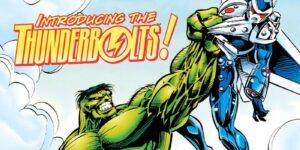
- Songbird (formerly Screaming Mimi) — first appeared in Marvel Two-in-One #54 (August 1979)
- Atlas (formerly Goliath of the Masters of Evil) — first appeared as Power Man in The Avengers #21 (October 1965)
- Mach-1 (formerly the Beetle) — first appeared in Strange Tales #123 (August 1964)
- Meteorite (formerly Moonstone) — first appeared in Captain America #192 (December 1975)
- Techno (formerly the Fixer) — first appeared in Strange Tales #141 (February 1966)
The Big Twist:
The Thunderbolts were introduced as a new heroic team during a time when the Avengers and Fantastic Four had disappeared (following the Onslaught event).
They were secretly the Masters of Evil in disguise, under the leadership of Zemo, plotting to win public trust — but unexpectedly, some members (like Songbird and Atlas) genuinely embraced heroism, leading to internal divisions and betrayals.
The Thunderbolts’ Expanding Legacy in Comics
Since their shocking debut in 1997, the Thunderbolts have undergone multiple transformations in the Marvel Comics universe — sometimes as tools of redemption, other times as pawns in government schemes. What began as a ruse by villains in disguise grew into a complex, evolving narrative about identity, morality, and the uneasy alliance between power and control. Over the years, the team’s structure, leadership, and mission have shifted dramatically, reflecting broader changes in Marvel’s tone and the world’s political climate.
Here are three notable eras that show how the Thunderbolts have been reimagined across decades:
America’s Most Wanted Era (Thunderbolts #76–81, 2003–2004)
In this darker phase, the Thunderbolts became a group of villains manipulated and coerced into serving the government’s interests. Stripped of the earlier team’s idealism, this version leaned into themes of control, surveillance, and the ethical compromises made in pursuit of order. These characters weren’t pretending to be heroes — they were forced into it, offering a cynical view of redemption and justice in a post-9/11 comics landscape.
The Redeemers Program (Thunderbolts #50–75, 2001–2002)
This run introduced the idea that some former villains could genuinely seek redemption. With Hawkeye occasionally stepping in as a leader, the Redeemers brought together individuals who truly wanted to change — not for power, but for purpose. It was a more optimistic take on the Thunderbolts legacy, emphasizing personal growth, team trust, and rehabilitation. However, even this era was not free from betrayal and moral ambiguity.
The Modern Espionage Thunderbolts (2023 Series)
In Marvel’s 2023 Thunderbolts series, the team was reimagined once again — this time as a covert operations unit steeped in spycraft and shadow politics.
- Led by: Winter Soldier (Bucky Barnes) and Contessa Valentina Allegra de Fontaine.
- Core lineup: Black Widow, White Widow (Yelena Belova), Sharon Carter, Red Guardian, and U.S. Agent.
- Mission type: Covert, politically sensitive, and often morally gray — far from traditional superheroics.
This espionage-heavy version reflects today’s complex geopolitical narratives and acknowledges that even so-called heroes are often navigating manipulation, compromise, and ethically murky missions. In many ways, it’s the closest parallel yet to the MCU’s upcoming movie, which also centers on antiheroes caught in the orbit of Valentina’s shadowy influence.
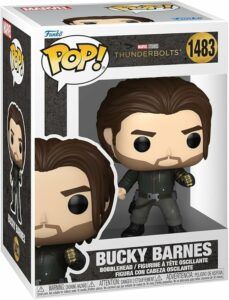
Key Takeaway for the Movie:
The Thunderbolts movie won’t follow any single comic version exactly.
- Leadership: In the MCU, Valentina appears to be orchestrating events from the start, unlike the original Zemo-led deception.
- Team Makeup: Instead of secret villain impostors, the MCU Thunderbolts are antiheroes and survivors — broken people with a chance (or illusion) of redemption.
In true Thunderbolts fashion, trust will be fragile, and agendas hidden.
While Marvel’s Thunderbolts movie assembles a very different roster than the original comics, it keeps the heart of the concept alive: a team of complicated figures trying (and sometimes failing) to rise above their pasts. Whether the MCU’s Thunderbolts will stay loyal, betray each other, or carve out their own version of redemption remains to be seen — but one thing is clear: these are not your typical superheroes.
Stay tuned — I’ll be posting a full review after the movie premieres! Some reports have seen are saying that Thunderbolts just might be the movie that saves the Marvel Cinematic Universe. I will be excited to read what you think after the movie opens this weekend!
In the meantime, check out this final trailer for MCU’s upcoming film.
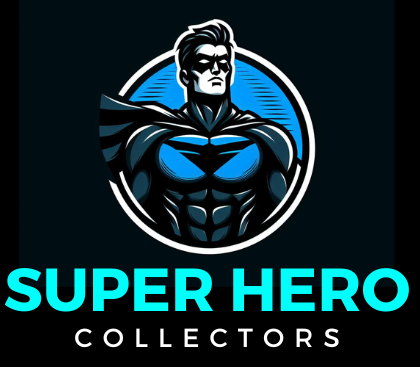
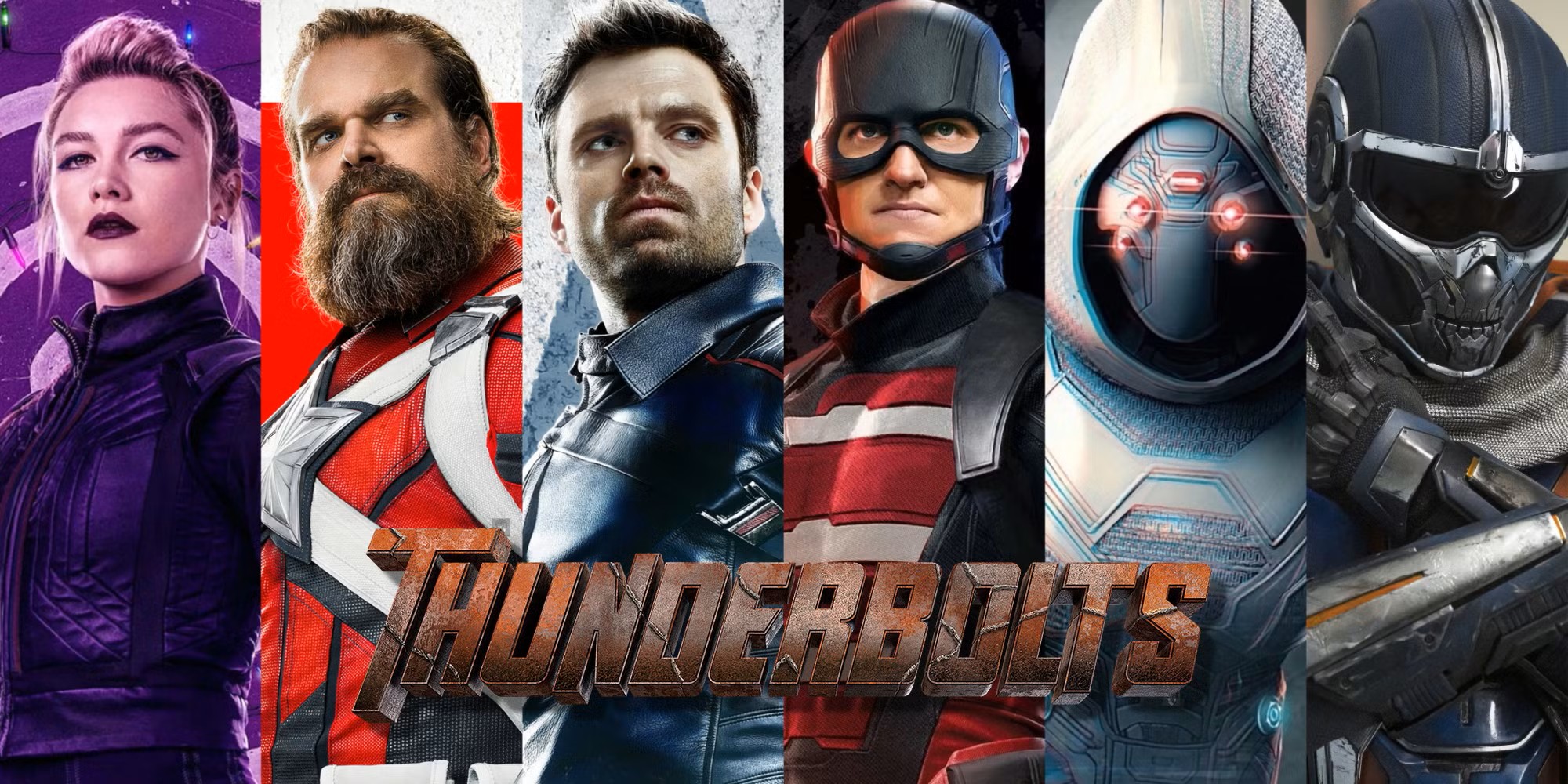
This was such an interesting breakdown—thanks for highlighting the differences between the MCU’s Thunderbolts and the original comic lineup.
As someone who mostly follows the MCU but is slowly getting into the comics, I found it fascinating how much character backstory and team dynamics have shifted. I had no idea about the original Baron Zemo-led lineup! It makes me even more curious how the MCU will handle the moral gray areas and redemption arcs, especially with characters like Yelena and Bucky.
Looking forward to seeing how it all plays out!
Thanks so much for the kind words, Alice! I’m really glad the post helped bridge the gap between the MCU and the comics. It’s always exciting when someone starts exploring the original stories—there’s so much rich character history to discover, especially with a team like the Thunderbolts.
The Zemo-led twist in Thunderbolts #1 (1997) was a huge shock to readers at the time and really set the tone for the themes of deception and redemption that defined the early series. The MCU is definitely taking a different approach, but characters like Bucky and Yelena still bring that sense of internal conflict and second chances, so there’s real potential for a fresh take on those ideas.
If you’re curious to dig into the comics more, I’d be happy to recommend a few great starting points for Thunderbolts stories—or other character arcs that tie into the team!
Your friendly neighborhood blogger —Scott
I’ve followed the Thunderbolts since their surprise debut in the comics, and it’s fascinating to see how the MCU is adapting them with such a different tone and lineup. I get the need for creative liberties, but I’m wondering, do you think the lack of Baron Zemo in a leadership role weakens the core concept of redemption and hidden motives that made the original team so compelling? I’m also curious how fans new to the Thunderbolts will connect with a team that’s less about deception and more about government-sanctioned missions. Could this shift change what made the team unique in the first place?
Thanks for your comment, Slavisa! It’s great to hear from someone who’s been following the Thunderbolts since their original comic debut—those early issues by Kurt Busiek and Mark Bagley really delivered a shock to the system with that big reveal at the end of Thunderbolts #1 (Jan 1997). You’re absolutely right that Baron Zemo’s leadership, and the theme of villains posing as heroes with hidden agendas, gave the team a layered moral complexity that’s hard to replicate.
The MCU’s version, at least from what we’ve seen so far, seems to be leaning more into the “Task Force” or Suicide Squad-style model, with government oversight replacing Zemo’s manipulations. This is actually similar to the 2023 Thunderbolts series that I mentioned in my post. That definitely shifts the tone away from deception toward reluctant cooperation and redemption through state-approved actions. While that might resonate with modern viewers who are more familiar with morally gray anti-heroes, it does risk losing the original hook that made the Thunderbolts stand out in the first place.
Still, it’ll be interesting to see if the MCU has a twist up its sleeve. Zemo is still out there in the MCU, so maybe he’ll return in some form. And who knows—new fans might connect with this version first, then go back and discover just how subversive the original team really was.
Do you think there’s a way the MCU could reintroduce that original deception/reveal concept down the road without repeating past tricks?
– Your friendly neighborhood blogger —Scott
Hey Scott,
I loved your deep dive into the Thunderbolts! Your enthusiasm for the intricate storytelling behind these characters really shines through. It’s exciting to see how the MCU is bringing such complex figures to life, blending their messy pasts with the hope for redemption. Can’t wait to see how it all unfolds on screen!
All the Best,
Eric
Thanks so much, Eric — I really appreciate your thoughtful comment! The Thunderbolts have always been a fascinating mix of redemption arcs and shifting loyalties, and it’s exciting (and a bit nerve-wracking!) to see how the MCU will interpret that legacy. I’m hopeful they capture the same complexity that made the original comics so compelling. Glad to have fellow fans along for the ride!
Stay tuned for more —
From the Helicarrier Files of Super Hero Collectors —Scott
Great article! I really enjoyed your breakdown of how the MCU’s Thunderbolts differ from their comic book origins. Your insights into character evolution and team dynamics were spot on. I especially liked how you highlighted the theme of redemption. Do you think the MCU will ever explore the original twist of villains pretending to be heroes? Also, which original Thunderbolt character do you wish had made it into the MCU lineup? Debra
Thanks so much, Debra! I’m glad you enjoyed the article and appreciated the focus on redemption—it’s such a core theme in the Thunderbolts’ comic legacy. That original twist, with villains posing as heroes for their own ends, was one of Marvel’s most brilliant reveals, and I’d love to see the MCU tackle something similar. It would add a whole new layer of tension and surprise for audiences who haven’t read the comics.
As for original characters, I really wish MACH-1 (Abe Jenkins) had made the cut. His arc from Beetle to a full-fledged hero is one of the most compelling in the series—and I think his tech-based suit and internal moral struggle would fit right into the MCU’s world.
Thanks again for your thoughtful comment—feel free to share which Thunderbolt you’d love to see in the MCU too!
—Scott
Your friendly neighborhood blogger at Super Hero Collectors
This was a fascinating read! I really appreciate how you broke down the differences between the original Thunderbolts from the comics and the MCU’s interpretation. It’s intriguing to see how the MCU has chosen to assemble a team of familiar characters like Yelena Belova, Bucky Barnes, and Ghost, rather than introducing the original comic lineup. The exploration of themes like redemption and shifting allegiances adds depth to these characters. I’m curious, do you think the MCU’s version of the Thunderbolts will eventually align more closely with the comic’s original team dynamics, or will it continue to forge its own unique path? Also, how do you feel about the potential for future storylines involving these characters?
Thanks so much for your comment, Hanna! I’m really glad you enjoyed the breakdown. You bring up a great question about whether the MCU’s version of the Thunderbolts might eventually mirror the original comic team. Personally, I don’t think we’ll see a lineup that closely resembles the original anytime soon—mainly because most of those characters, like Songbird, Atlas, and Techno, haven’t even been introduced in the MCU yet. It would take several films or series just to establish their backstories and relationships, which makes it more likely the MCU will continue forging its own version of the team using already familiar faces like Yelena, Bucky, and Ghost.
That said, the heart of the Thunderbolts—redemption, shifting loyalties, and that blurred line between hero and villain—is still present, just reimagined for the cinematic universe. I think there’s a lot of potential in future storylines, especially as these characters continue to wrestle with their pasts and roles on the team. We might not get the original twist of villains pretending to be heroes, but I wouldn’t be surprised if Marvel gives us a few surprises along the way.
Thanks again for reading and sharing your thoughts!
—Your friendly neighborhood blogger, Scott
Great article Steve. I’ve never really dove deep into Marvel comics, but have read and followed throughout my lifetime enough that I am familiar with many of the characters you have mentioned in this article. It is interesting to see someone like yourself immersed in the world of comics, that can provide so much detail on the comparison of the original vs the 2025 team. Appreciate the comparitive information, and I found your article to be quite interesting. Best wishes!
Thanks for the thoughtful comment, Kevin — even if you did call me Steve! ???? (No worries — happens more than you’d think! I’ve even told people my name is Scott in a conversation, and they called me Steve. Believer or not, I’ve even been called Kevin! ????) I really appreciate you taking the time to read the article. I try to make these comparisons approachable for fans like you who know the characters but haven’t necessarily dived deep into the comics. The Thunderbolts have a fascinating history, and it’s fun to see how the MCU is putting its own spin on them. Hope the movie lives up to the potential — and maybe even inspires you to check out a few of those original storylines!
Please come back for more superhero fun!
Your friendly neighborhood blogger —Scott
This really oped my eyes to how marvel characters are intertwined with each others stories.
I did not realise how many characters there are. The thunderbolts are new to me, I know of the winter soldier but I never knew about the other thunderbolt characters so it’s been very intriguing reading your article.
I like the fact that the thunderbolt characters are being brought back in to the line light with new story lines. from you timeline they have evolved but somewhat under the radar for me.
I am going to watch Black widow and all Falcon and the winter soldier as I have not seen these movies however I feel I must now after reading your article!
HI Darren,
I’m thrilled that you enjoyed reading the post and that it opened your eyes to the depth of the Marvel Universe. You might also want to watch the first Ant Man and Wasp movie as it shows the origin of Ava/Ghost – at least the MCU version.
Some fans might be disappointed that the movie didn’t include the members of the original Thunderbolts from the comics, but that would have taken a long time to set up with new characters that had not been introduced into the MCU. The team represented in this new movie more closely resembles that 2023 comics team that had Bucky and Valentina de Fontaine. Bucky, Yelena, Alexei, Ava, and Walker had already been introduced in the MCU so it makes sense to go with those characters.
I hope you enjoy looking deeper into Marvel comics. I am always amazed at the depth of the characters, and I enjoy writing about them and their different portrayals in the MCU. I hope you check out the rest of my site.
Your friendly neighborhood super-blogger,
Scott
This was a fantastic deep dive, Scott—really appreciated the balanced comparison between the MCU lineup and the original comic roots. I love that the film seems to capture the core Thunderbolts themes of redemption and moral ambiguity, even if the roster is wildly different. Valentina as the orchestrator feels like a perfect modern twist on Zemo’s original deception. I’m especially curious how the MCU handles Sentry and “The Void.” Do you think the film might explore the team splintering like in some of the comic arcs?
Thierry
Thanks so much, Thierry — I really appreciate your thoughtful comment! You’re absolutely right: even with the roster changes, the core Thunderbolts themes of redemption and moral gray areas seem to be intact, which is key to what’s always made the concept so compelling. Valentina as the manipulator is definitely a clever update that mirrors Zemo’s original scheming in a modern, espionage-driven way.
As for the Sentry and the Void — that’s a wildcard I’m really looking forward to. If the MCU leans into the psychological and destructive duality of that character, it could introduce some serious internal conflict and paranoia within the team. And yes, I do think we could see the Thunderbolts splinter or turn on each other. It wouldn’t be true to the comics without some betrayal or ideological rift tearing them apart!
Looking forward to seeing how it all unfolds.
—Your friendly neighborhood super blogger,
Scott